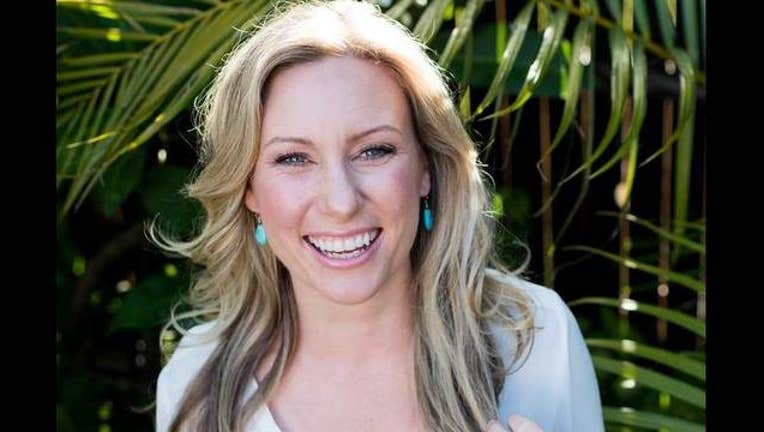Prosecutors: Noor's response to other 911 call before shooting 'completes the story'

Justine Damond. Photo credit: Steven Govel Photography
MINNEAPOLIS (FOX 9) - Prosecutors want the jury in the upcoming trial of fired Minneapolis police officer Mohamed Noor to hear about Noor and partner Matthew Harrity’s response to a 911 call less than two hours before Noor shot and killed Justine Damond Ruszczyk.
Noor is facing multiple murder charges for the July 2017 shooting. According to the Minnesota Bureau of Criminal Apprehension, Noor and Harrity were responding to Ruszczyk's report of a possible assault of a woman in an alley by her house when the shooting happened. Noor shot Ruszczyk through the open window on the driver’s side of the squad car as he sat in the passenger seat.
Ruszczyk’s 911 call was placed at 11:27 p.m. on July 15, 2017 from inside her home on Washburn Avenue S. Ruszczyk told the 911 dispatcher she could hear a woman in the alley behind her house who was either having sex or being raped.
“It sounds like sex noises, but it's been going on for a while and I think she tried to say help
and it sounds distressed,” Ruszczyk said. READ THE 911 TRANSCRIPT
Dispatch requested a response from Noor’s squad car 41 seconds after receiving Ruszczyk’s call. Five seconds later, Noor pushed a button to acknowledge the call had been received. While Noor and Harrity were en route, Ruszczyk called 911 again at 11:35 p.m. to report officers had not yet arrived and she was worried they got the address wrong.
At 11:37 p.m., Noor and Harrity arrived in the alley between Xerxes Avenue and Washburn Avenue. Squad car GPS data shows the officers were nearing the south end of the alley at 11:39 p.m., one minute and 54 seconds after entering the alley on the north end. At that time, Noor entered "Code 4" into the squad computer, which means the situation is under control and no assistance is needed. The squad was still parked at the end of the alley at 11:40 p.m. which, according to the prosecution’s filing, “is the last known time before the defendant fatally shot Ms. Ruszczyk.”
Approximately one hour and 40 minutes before Officer Noor shot and killed Justine Ruszczyk, he and Officer Harrity went to another call just a few blocks away from Ruszczyk’s home in response to a series of three 911 calls from a single caller requesting a welfare check on a 65-year-old woman with large suitcases who might be lost or have dementia.
Noor and Harrity arrived at 48th Street and Xerxes Avenue at 9:59 p.m. and asked dispatch to contact the 911 caller again at 10 p.m. because they did not see anyone. At 10:02 p.m. they were told the woman was last seen at a bus stop at 50th and Xerxes, which is about 650 feet from the place Ruszczyk was shot. Less than a minute later, Officer Harrity entered “Code 4” and they returned to the 5th Precinct for a dinner break.
“Asked later if he drew any connection between the call that brought him to 50th and Xerxes for a woman wandering with dementia and the call that brought him to the alley of the same block one hour and 34 minutes later for a call of a woman screaming in the alley, Officer Harrity said he did not,” the prosecution’s filing states.
“This is relevant and intrinsic evidence because it arose out of the same circumstances, completes the story of what happened that night, helps prove an element of the offense, and tends to disprove the defendant's affirmative defense,” prosecutors argue in their court filing.
So how do prosecutors connect the two responses together? In their court filing, they state:
Friday was the deadline to submit pre-trial motions in the case. Noor's attorneys are asking the court to sever the count of second-degree murder charge from the counts of third-degree murder and second-degree manslaughter charges, arguing “the defense of each count requires competing defenses to the elements.”
If the judge grants this motion, it could require a second trial for the separated charges.
Noor's trial is scheduled to begin April 1. Filings from the defense indicate Noor will claim self-defense and the use of reasonable force to defend others.

